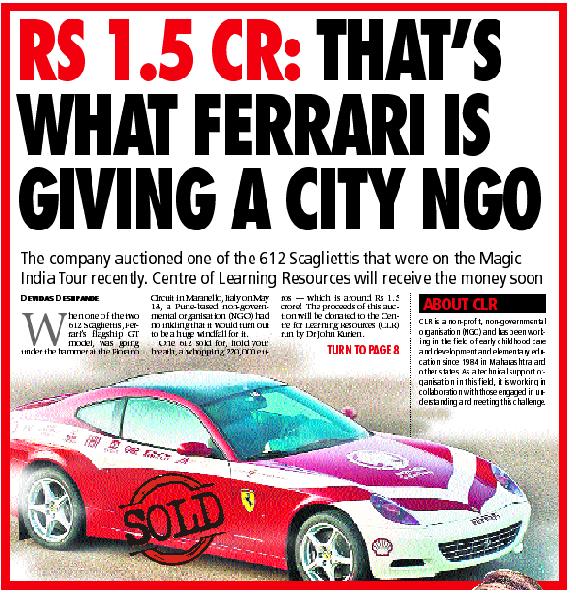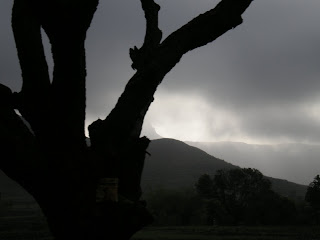Some generous help from US government and the theoretical calculations has taken EKA down in the world list. But the lab is determined to regain the position.

The International Supercomputing Conference held recently at Dresden, Germany unveiled new list of top 500 fastest supercomputer in the world. Though EKA has given a performance of 132.8 Teraflops, it has been ranked at the 8th position in the new list.EKA, developed by the city based CRL, a wholly owned subsidiary of Tata Sons Ltd., was ranked fourth supercomputer in November 2007 in SC07, the International Conference for High Performance Computing, Networking, Storage and Analysis at Reno, Nevada, USA.
EKA uses nearly 1800 computing nodes. Last year, it had a peak performance of 170 Teraflops (TFlops or Trillion Floating Point Operations per Second) and a sustained performance of 120 Teraflops based on the LINPACK benchmarks which are used by the world-wide community to rank supercomputers based on performance.
Reacting on this development, Harsha Ramchandra, spokesperson for CRL said, “We have improved our rating to 132.8 Teraflops solely through software upgrade. This means that our system performance has grown practically but it has not grown theoretically. We are planning to build a bigger system which will improve our ranking. While ranking is important, it is not our end-all.”
She told Pune Mirrror, “In fact, our main emphasis is on scaling applications which will effectively utilise the computing power of EKA. This is a difficult problem but we will be able to tackle it because of our proven expertise in software and our domain knowledge of a range of applications. Once we do this scaling, we will be able to solve several "grand challenge" problems in various application domains. It is this activity which will benefit users of HPC and so this is what we will focus on.”
EKA includes nodes and racks built by Hewlett Packard (HP Cluster Platform 3000 BL460c system) which uses high speed quad-core Clovertown processors from Intel Corp. and Dual Data Rate Infiniband switches from Mellanox Corp. and Voltaire Corp.
Meanwhile, industry sources attributed this slide down of the supercomputer to the active support given by US government. While all the supercomputers in the US have come from the government funded labs, EKA was a product of privatley funded lab. After scientists in the US demanded to increase the funding from government, they got it. It has resulted in the top five slots being occupied by the US supercomputer with fastest supercomputer achieving a performance of 1.026 petaflop/s.
--------------------
Now, yesterday I, alongwith other media persons of course, got an invitation that C. Ramadorai, chairman of CRL will address a media meet. It was really a very lerning meet. We got to see complicated and large structure of EKA. I again reported on that which runs like this :
The fastest super computer in Asia and eighth fastest in the world, EKA, runs on the Linux operating system. That is keeping in with the procedure followed by most of the supercomputers all over the world, including top 500 supercomputers. Officials of the Computation Research Laboratory, which has developed EKA say that this system offers more stability hence it is an obvious choice.
 C. Ramadorai, chairman of CRL, who was in Pune to give an update on EKA, informed that CRL's performance was enhanced from 117.6 teraflops in November 2007 to 132 teraflops at present on the basis of software upgradation. This has been done on the basis of Linux operating system which offers more stability for complicated computations, which are necessary for a supercomputers. At present, CRL has ported various applications like Computer Aided Engineering, Computational Finance, Information Security, Atmospheric Sciences, Animation and Rendering, Seismic information. Linux offers most reliability for such types of applications.
C. Ramadorai, chairman of CRL, who was in Pune to give an update on EKA, informed that CRL's performance was enhanced from 117.6 teraflops in November 2007 to 132 teraflops at present on the basis of software upgradation. This has been done on the basis of Linux operating system which offers more stability for complicated computations, which are necessary for a supercomputers. At present, CRL has ported various applications like Computer Aided Engineering, Computational Finance, Information Security, Atmospheric Sciences, Animation and Rendering, Seismic information. Linux offers most reliability for such types of applications. N. Seetha Rama Krishna, another high official from CRL said that most of the supercomputers all over the world use Linux for their operations. All MPI enabled applications are run on this platform. There are 14,400 cores in 1800 blades in the laboratory and there are dual quad-core Intel processors in each blade. Therefore keeping with the world practise, CRL is using Linux. The management software stack of the EKA is a mix of open source and commercial software.
Giving information about the EKA cluster, Krishna said it is housed in octagonal structure which facilitates easy cooling for the super computer. It has 65 racks and server floor area is 4000 sq. ft. The air conditioning capacity is 350 ton and in terms of power consumption, EKA is 10 to 15 percent more efficient than other super computers in the world.
Animation Within Hours
CRL is also eyeing animation sector for the applications on EKA. Giving details about the move, Dr. Rajesh Lagu said, "At present, animation movies are sequence of images rendered from computer models. They are set in motion through series of frames. Using EKA, the time for processing such images can be substantially reduced. It can also be used for Rendering which means process of calculating effects in a video editing file to produce final video output. Softwares like Maya and Renderman can be used effectively for this purpose. By doing so, we can make an animation film within a month which otherwise could take one year."
Ranking Doesn't Matter
Speaking on the subject of sliding down in world ranking of super computers, C. Ramadorai said CRL is not really interested in the ranking but to put EKA for more and more into use by developing various applications. "The power of the system is not in ranking but in applications," he said.
He said that CRL did not expect that EKA will stand fourth fastest in the world. "After that, governemnt labs in US approached government and got their fundings increased. But for us, this is a private corporate enterprise. Therefore without partaking in any race for the numbers, we are focusing on applications."
EKA in a Nutshell
Peak Performance : 172 Terabytes
Sustained Performance : 132.8 Teraflops
Total Memory : 28 Terabytes
Storage : 80 Terabytes with 5.2 GB per second throughput
Interconnect : 20 GBPS Infiniband DDR
Cabling : 45 Kms (10 Km electrical, 15 Km Infiniband, 10 Km Ethernet)









